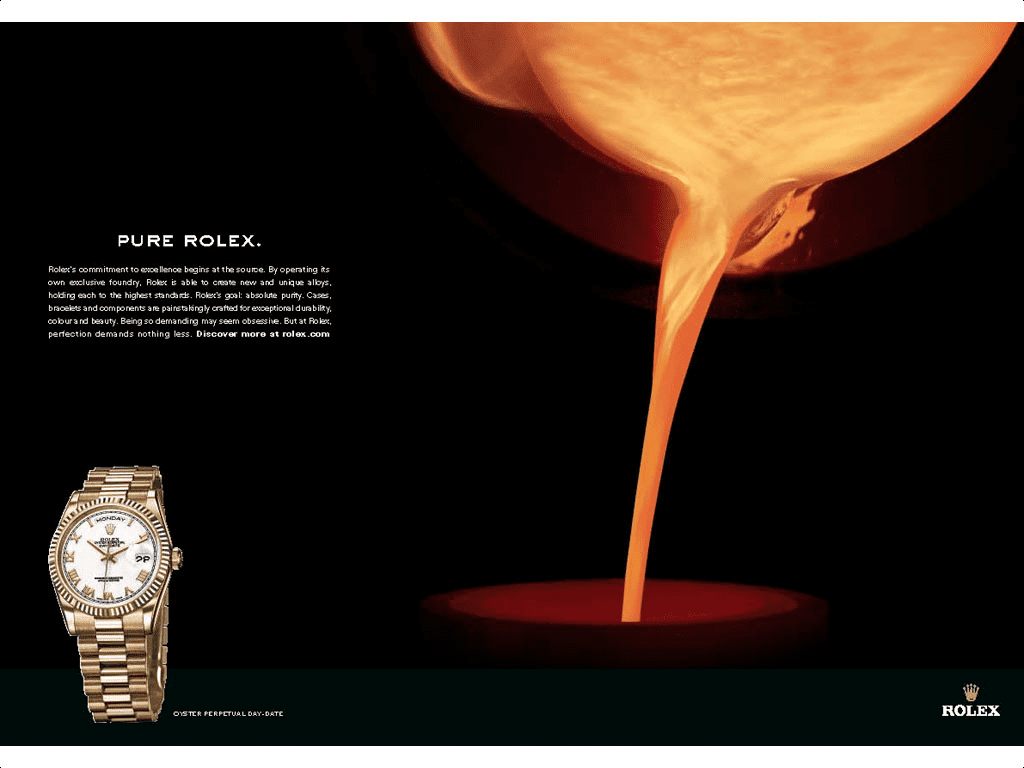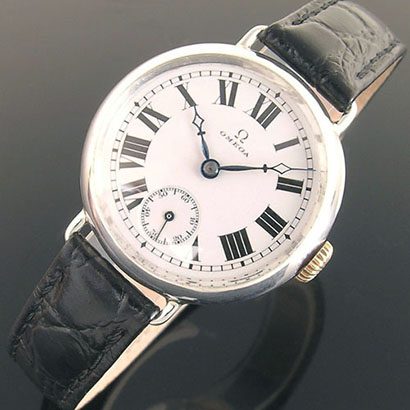
The 3 Reasons why Rolex is King…Or at least why everybody wants one
Rolex SA (for Société Anonyme, meaning limited company) is a luxury watch manufacturer based in Geneva, Switzerland. The brand was founded as Wilsdorf & Davis in 1905 before its directors, Hans Wilsdorf and Alfred Davis, registered Rolex as the brand name of its watches in 1908. The brand has gone on to become the most widely appreciated watch company of all time, seeping into almost every aspect of modern culture and producing a plethora of iconic models such as the Submariner, the Daytona, the GMT Master, the Datejust and the Day-Date.
With that being said, there are half a dozen brands that have a similarly impressive heritage and even brands that have contributed more in terms of horological achievements and milestones. So why is Rolex currently the only watch-exclusive company to feature in Forbes’ top 100 most valuable brands? Why are some Rolex watches’ aftermarket prices as much as four times that of the retail? Why do decade-long waitlists exist for simple, 3-register, steel chronographs? And why is it that when a non-watch person refers to a luxury watch brand, it’s almost always Rolex? If you ask us, the reasoning behind Rolex’s dominance comes down to three main factors that set the brand symbolised by a Coronet apart from all of its competitors.

Consistency and Design Superiority
The first factor that we believe to be instrumental to Rolex in terms of mass brand appeal is their consistency when it comes to design and the resultant distinction when comparing Rolex watches to what the rest of the market offers. We, as consumers, know what we like and we like what we know – the vast majority of modern Rolex watches look remarkably similar to their predecessors. These are tried and tested designs that we’ve seen on the wrists of world leaders, magazine cover models and sporting stars for decades and while many of the enthusiast community are frustrated by the minute changes that are made from generation to generation, this reluctance to completely overhaul designs is key in creating a brand whose products are instantly recognisable. Many would say it also shows how strong the original Submariner, Oyster, and Daytona designs were that watches with the same key design elements are still top of everyone’s wishlists.

Effective Marketing: Superior Positioning
Consistent design is one thing when it comes to building a recognisable brand, but we don’t believe Rolex would have made it to their current god-tier status if it hadn’t been for some of the greatest marketing strategy that the industry has ever seen.

Most business management textbooks will dictate a ‘5% Rule’ when it comes to marketing spend. Decades of analysis on thousands of small, medium and large businesses support this statement that for the best business success, companies should spend around 5% of their total annual budgets on marketing. Throughout their history, Rolex have repeatedly dismissed this guide with recent reports showing that Rolex currently put 10% of their total yearly expenditure into marketing – that’s around £39,506,320.
While this is a disproportionate level of marketing spend, even in the luxury sector, all of this expenditure adds value to the Rolex brand and its resultant desirability. Furthermore, Rolex is smart when it comes to distributing the budget: no direct television ads, no gaudy billboards. Rolex are the masters when it comes to collaborating with well-positioned, high-status brand ambassadors such as Roger Federer, Jackie Stewart and Martin Scorsese. Association with such influential and well-respected individuals promotes the idea that a Rolex watch represents high status and success.
Rolex also have a reputation for astute advertising campaigns that attach Rolex to important historical events such as Hillary and Norgay’s ascent of Everest or James Cameron’s historic solo dive to the bottom of the Mariana Trench. For many, these associations are the route of public opinion regarding Rolex watches and their superior toughness.
So, Rolex advertising promotes the status that the watches carry for the wearer and their technical brilliance when it comes to physical capability. The final piece in the master advertising plan is to place Rolex where the target audience is watching. Rolex advertises at sporting events watched generally by wealthy, universal audiences with addictive personalities such as Golf, Tennis and Formula 1.
Many will speculate that there’s a fourth aspect to Rolex’s marketing plan – a controversial strategy with a goal of creating a sense of hype and scarcity around their watches in order to drum up even more interest. Due to the inflated aftermarket prices that can be charged for many Rolex sports watches, independent Rolex authorised dealers are forced to sell their ‘hot’ Rolex watches to grey market dealers (re-selling companies) in order to offload less desirable pieces to meet their sales targets. For the average consumer, this means it’s hard to walk into an AD and buy a popular Rolex watch because the average consumer can’t offer to buy up the two diamond-covered Pearlmasters that have been sitting in the safe for 10 months along with 4 two-tone Datejusts. As a result of this, many watch enthusiasts believe that Rolex watches are rare to find and that Rolex doesn’t/can’t make enough watches to meet their demand.

In actuality, Rolex makes more watches yearly than Omega (700,000), TAG Heuer (700,000) or Longines (500,000) with the four Rolex manufacture centres churning out over 800,000 watches every year.
Without wishing to go too deep, it’s human nature to desire things that appear difficult to acquire as they often make us feel superior to others. If what is happening with supply is an active intention from Rolex’s marketing big wigs, the brand is leveraging this phenomenon in two ways: firstly by pricing their watches above the majority of their competitors and secondly, artificially limiting those that can buy them due to a manufactured scarcity. Conspiracy or not, it’s interesting to think about why most Rolex AD’s struggle to put one steel sports model in their windows while popular grey market dealers are able to take shots like these of ‘rare’, ‘waitlisted’ watches.

Attractively Independant
So, great designs delivered consistently and top tier marketing: Omega have both of those too, don’t they? In our opinion, the final factor that puts Rolex at the top of the desirability pile is the fact that they’re still, quite uniquely, independently owned.
In 1945 Hans Wilsdorf set up the Hans Wilsdorf Foundation. In 1960 he handed over his 100% ownership stake in Rolex along with its subsidiary (Montres Tudor SA) to the Foundation, enshrining the Rolex brand with long term independence and an inability to be sold-off.
Along with this long term security due to their charity status, Rolex aren’t obliged to publish a great deal of financial information, they don’t have to pay dividends to shareholders and they enjoy a small reduction in taxation. From an operational point of view, independence ensures that all business decisions are made on Rolex’s own terms. Production is almost completely in-house – Rolex even have their own foundry meaning they can create unique alloys like their non-fading rose gold blend: Everose Rolesor. All of this adds to the independent and exclusive image that the brand has maintained so consistently over the last 100 years of operation.

To Close
So, these are the reasons why we think Rolex are dominating the watch scene when it comes to desirability. We’d love to hear your thoughts on this topic so please do add a comment below.






